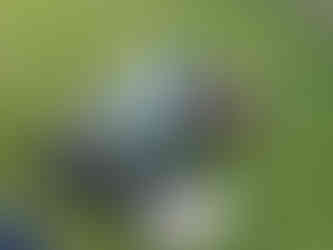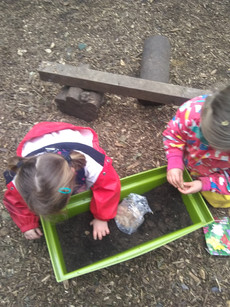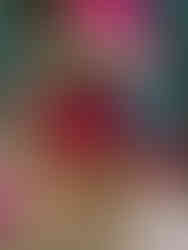
Book of the week: 'British Garden Life' by Miles Kelly publishers.
Synopsis: Children will be surprised at the variety of mammals, birds, bugs, reptiles, trees and flowers that inhabit their back garden, parks and farms. Helpful sections provide information on how gardens change through the seasons and what readers can do to encourage a healthy and happy wildlife environment. Fact files for every species provide key identification tips and vital statistics, and are accompanied by labelled illustrations and photographs.
Main Activity: Spring Checklist! We printed out some sheets which showed pictures of spring related items next to the words for them. The children had to search for, identify and then tick the items off of their lists. The items were:
Blossom | Ladybird/Ladybug | Daffodil | Bird | Nest | Seedling | Bud | Green Leaf
We started by looking around the nursery for the items. The older children took the sheets and searched by themselves or in groups and the practitioners helped the younger ones by pointing things out or telling them where to look. That soon expanded to going on our spring nature hunt outside the nursery where we found several more of the items. We talked about what happens in springtime and how the seasons are changing. We also talked about all the things on the spring checklist and asked the children which ones they had seen at either at home in their gardens, in parks or just walking around and looking about.
Additional Activities:
Planting Seeds. We bought some medium sized colourful planters, planted our seeds in them and placed them in our new greenhouse. Some of the children also planted seeds in much smaller, cardboard pots that they could take home
Making Googly Eyed Stick Monsters. This involved the children sawing a square piece of wood with a hand saw, sanding it down using sand paper to smooth the edges, painting it (if they wanted to), attaching some thin stick arms and legs and to finish, sticking some large googly monster-esque eyes on it
Identifying Animals and Insects. We printed off some pictures of various animals and insects that we might see around us such as foxes, birds, badgers, centipedes and woodlouse etc and looked up information about them such as their habitat and what they eat etc
Making Giant Bubbles. We got a clean tuff tray, poured a load of bubble mixture on it, gave the children straws (with strict instructions to blow, not to suck!) and let the fun commence...
Home Activity:
Leaf Activities
There are lots of really easy but highly effective activities you can do using leaves. Here are a few ideas for you to try at home and then upload your pictures onto Tapestry (please remember to ask the children to find leaves from the ground and not to pick them. 'No picking, no licking' is what we remind them of at Forest School):
1. Leaf Necklace. Thread leaves onto some string or cotton to make a colourful necklace.
2. Leaf art. Stick leaves onto colourful square card, place them next to each other to create a wonderful leafy collage which can be as large as you like. You could even frame it and hang it in your child's room for an inexpensive but beautiful looking picture that they made themselves.
3. Leaf Animal. Paint or draw animal faces onto leaves and cut out smaller pieces of leaves for the paws or wings.
4. Hapa Zome Print. Extract the liquid from plants, leaves and flowers onto fabric to make a fantastic pattern. Here's how: https://www.youtube.com/watch?v=MhwAXL_RdI8
5. Leaf Crown. Cut some card to go around your child's head. Stick some leaves onto it and tape the ends together to make a really quick and easy leaf crown.
6. Leaf Magic Wand. All you need is a stick, a large leaf and some tape. Tape the leaf to the end of the stick and you have a magic wand! You can also paint the leaf and decorate stick if you like with some colourful cotton, string or ribbon to give it extra magical powers.
























































































Comentários